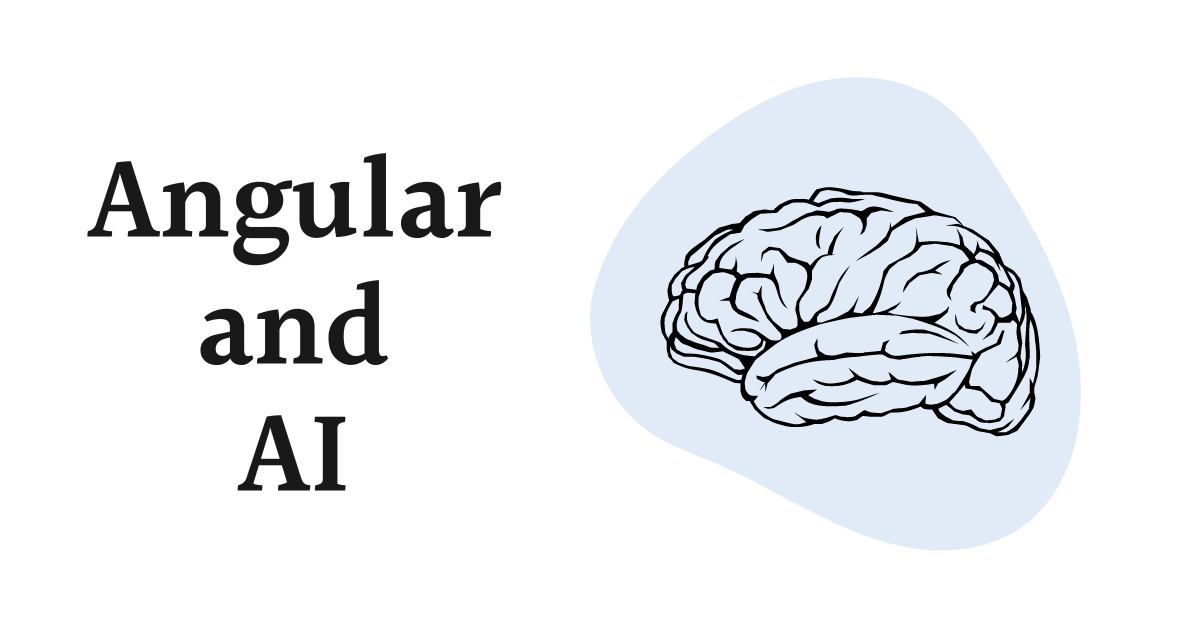Angular is a widely popular web application framework developed and maintained by Google. It is a powerful and robust platform for building web applications, particularly single-page applications (SPAs), with ease. On the other hand, Artificial Intelligence (AI) is a field of computer science that aims to create intelligent machines that can think and learn like humans. You’ve probably heard of the ChatGPT by OpenAI which is a great example of AI. Both Angular and AI are unique technologies, but when combined, they can create new opportunities and possibilities for businesses and developers. In this blog post, we will explore the intersection of Angular and AI and how they can work together to deliver intelligent web applications.

Angular and AI
Angular is a framework that focuses on the client-side of web development, while AI is mostly associated with server-side technologies. However, with the rise of AI and machine learning, developers can now integrate these technologies into their client-side applications. AI-powered features can enhance user experience, provide personalized recommendations, and automate repetitive tasks. Angular, with its powerful data binding, component-based architecture, and robust ecosystem, provides a solid foundation for building web applications that leverage AI technologies.
AI-Powered Components in Angular
Angular’s component-based architecture provides an ideal structure for integrating AI components into web applications. Developers can create components that utilize AI-powered services, such as chatbots, recommendation engines, or natural language processing (NLP) tools. These components can be easily integrated into existing Angular applications and can provide users with intelligent and personalized experiences. For example, an e-commerce application can use an AI-powered recommendation engine to suggest products based on a user’s browsing history and purchase behavior.
Real-Time Analytics with Angular and AI
Angular provides an excellent platform for building real-time dashboards that can display data from various sources. When combined with AI-powered analytics tools, such as machine learning algorithms or predictive analytics models, developers can create powerful dashboards that can provide real-time insights and recommendations. For example, a healthcare application can use real-time analytics to monitor patient vitals and predict potential health risks. Developers can use Angular’s data binding and change detection mechanisms to display this data in real-time on the dashboard.
Chatbots and NLP in Angular
Chatbots and NLP tools are becoming increasingly popular in web applications. They provide users with a conversational and personalized experience, and can automate many tasks, such as customer service or sales inquiries. Angular’s component-based architecture provides an ideal structure for integrating chatbots and NLP tools into web applications. Developers can create chatbot components that can handle user queries and provide personalized responses. They can also integrate NLP tools that can analyze user input and provide more accurate responses.
Conclusion
Angular and AI are both powerful technologies that can provide developers with new opportunities and possibilities. When combined, they can create intelligent web applications that can enhance user experience, provide personalized recommendations, and automate repetitive tasks. Angular’s component-based architecture, data binding, and change detection mechanisms provide an ideal structure for integrating AI components into web applications. Developers can leverage AI-powered tools, such as chatbots, recommendation engines, or real-time analytics, to create intelligent and personalized web applications. The intersection of Angular and AI is an exciting space, and we can expect to see more innovative applications in the future.
Read more on Angular: Angular Chart.js: How to implement Line Chart and Bar Chart
Leave a Reply